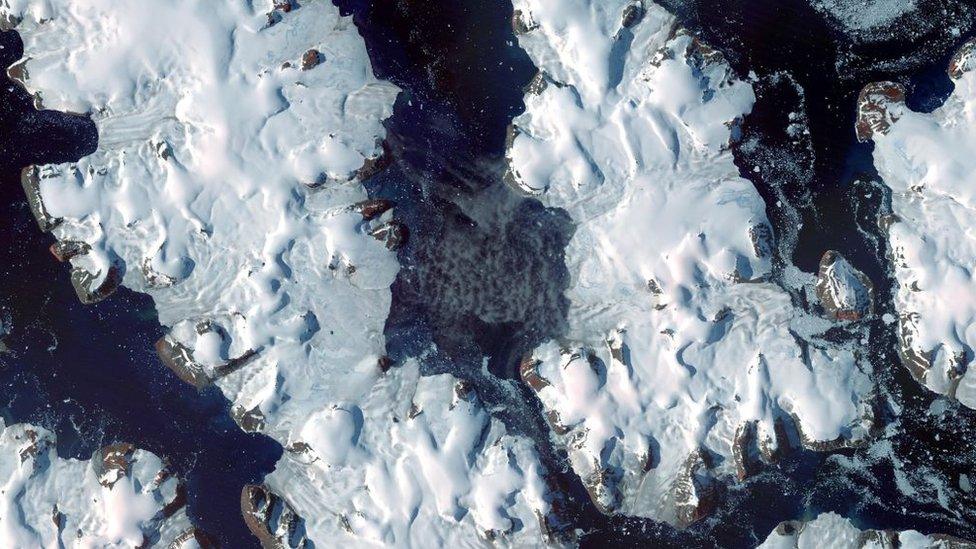Antarctica: How has it changed since it was discovered 200 years ago?
- Published
- comments
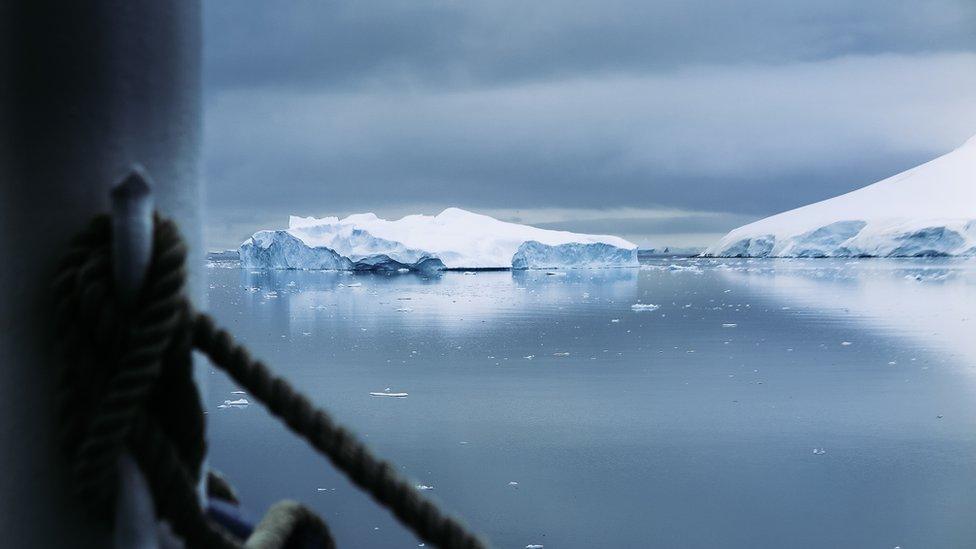
Can you imagine a world where we didn't even know Antarctica existed?
Well for centuries no one had explored this part of the world before - it was only in 1820, 200 years ago, that is was discovered.
But because it was such a hostile environment, it was another 75 years before the first major adventurers setting out to explore the frozen waste, setting in motion what's called the Heroic Age of Antarctic exploration.
Between 1895 and 1920 is when many of the most famous Antarctic missions took place.
What's it like in Antarctica?
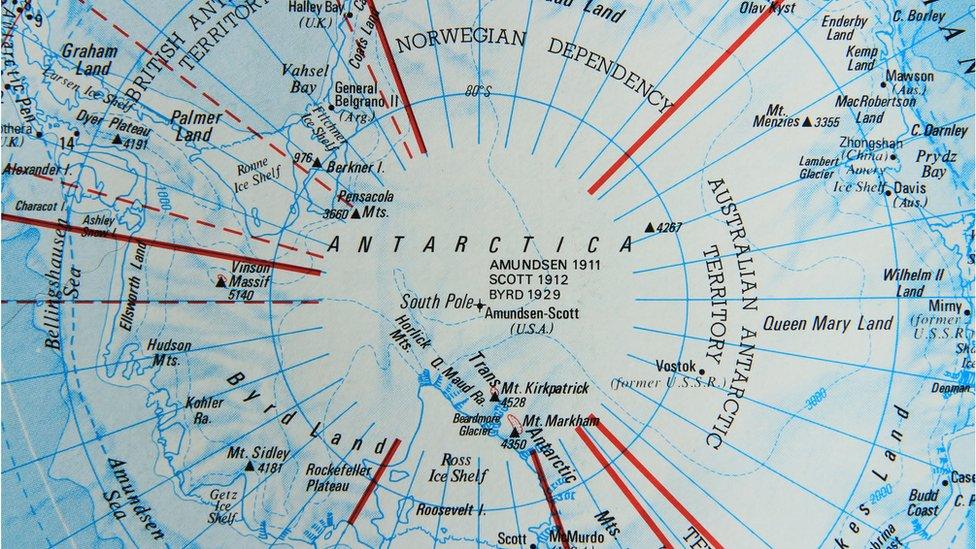
It's one of the coldest, driest and windiest areas of planet earth, but it's much more than just a big block of ice, even though the ice is almost 5km deep in some areas.
Wind speeds can reach more than 200 miles per hour there!
Antarctica is absolutely enormous - about 58 times the size of the UK and covering almost 14 million square kilometres. Even the icebergs which break off the continent can be massive - one recorded was the same size as the country of Jamaica!
The continent is divided into two regions, known as East and West Antarctica. East Antarctica makes up two-thirds of the continent, and is about the size of Australia.
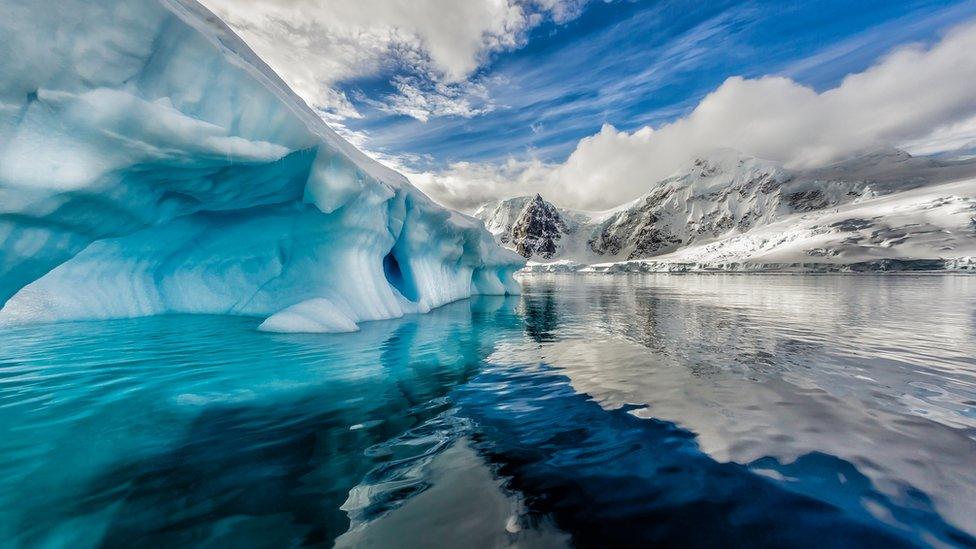
West Antarctica is very different. It's a series of frozen islands stretching toward the southern tip of South America, forming an extension of the Andes Mountains.
The two regions are separated by the Transantarctic Mountains, a range that stretches across the continent, and is sometimes completely covered by ice.
The ice of Antarctica is not a smooth sheet but continuously changing thanks to high winds and glaciers inching across the continent, cracking and breaking the ice.
The South Pole is near the middle of Antarctica. That's the very bottom of the planet.
What's it like to live in Antarctica?
WATCH: What's it like to live in Antarctica? (July 2018)
Jess Walkup, a leader at a scientific research station in Antarctica working for the British Antarctic Survey, has given Newsround an exclusive tour around her base to show us what life is like down there.
Nobody lives there permanently, but that doesn't mean there aren't any rules there.
In 1959 Britain and 12 other countries signed The Antarctic Treaty, designed to regulate international relations on the only continent without a native population. The treaty came into effect in 1961.
It's an incredibly important place for scientific research, and so at any one time there may be many hundreds scientists spread across the various research stations all over the continent.
In 1985 scientists from The British Antarctic Survey (BAS) made the huge discovery that that there hole in the ozone layer, which is responsible for stopping harmful UV rays from hitting Earth, whilst still allowing the warm sunshine to pass through.
A hole in the ozone layer caused by man made chemicals means that harmful UV rays can penetrate the Earth. The consequences are similar to when you forget to apply sunscreen at the beach!
How cold is it in Antarctica?
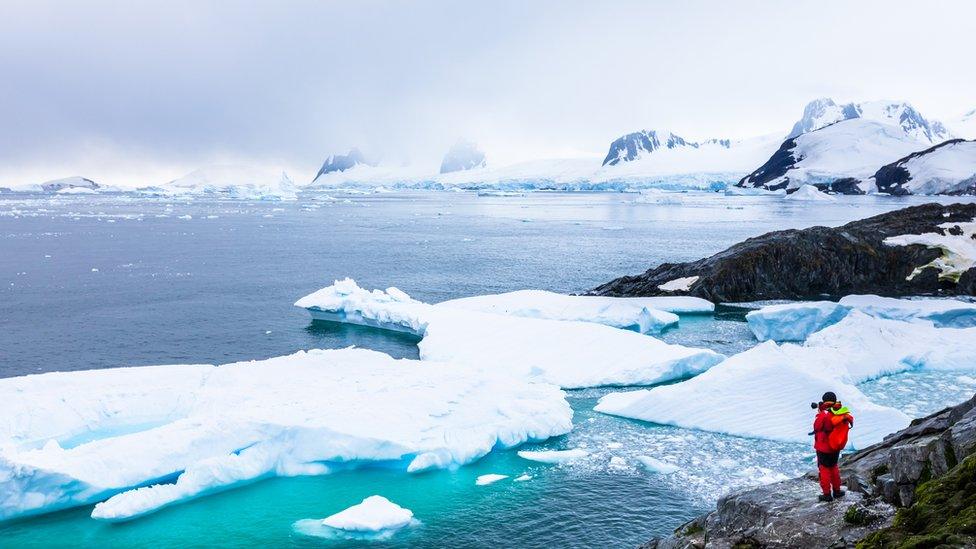
Because it lies in the Southern Hemisphere, seasons in Antarctica are the opposite of seasons here in the UK.
Summer runs from October to February and it's winter for the rest of the year. Antarctic summers average just above freezing, with East Antarctica even colder than the western region.
During the summer in Antarctica the sun never sets, so it's light all the time.
In parts of Antarctica the winter temperature can be minus 60°C, and sometimes it can be even colder than that.
The lowest temperature recorded in the world, minus 89.6 degrees Celsius, was recorded at Vostok Station, a Russian research station in inland Antarctica on 21 July 1983.
Jess Walkup answers your questions about life in Antarctica
But not everywhere in the area is cold either! In July 2019 a lake of fiery hot lava was discovered inside a volcano the icy South Sandwich Islands, in the sub-Antarctic.
Researchers believe that the lake could be between 90 and 215 metres across, and the temperature of the lava could be more than 1,000 Celsius.
That means the lava is ten times hotter than boiling water.
What do you need to wear to go to Antarctica?
WATCH: What do you wear to go to Antarctic?
BBC Environment Correspondent Justin Rowlatt travelled to West Antarctica with a team of scientists from the UK and US,
But it's not like packing for a holiday in Spain, or even somewhere really cold like Russia.
It could be even colder than minus 30 degrees. So what was in his Antarctic wardrobe?
How was Antarctica discovered?
30 January 1820 - a British ship under the command of Edward Bransfield spotted it in the distance. However there are claims a Russian explorer, Fabian von Bellingshausen, saw Antarctica just three days earlier. Historians think both have good claims to being the first.
1821 American seal hunter John Davis was the first to claim he landed on Antarctica, although some historians don't support his claims.
1901-1904 The National Antarctic 'Discovery' Expedition was launched by the Royal Society and Royal Geographical Society (RGS).
It undertook scientific research and geographical exploration of, what was then, an almost entirely untouched continent. Great discoveries were made in the fields of biology, zoology, geology, meteorology, and magnetism.
The expedition - which included Ernest Shackleton - reached further south than anyone before them and Scott returned to Britain a national hero. He had caught the exploring bug and began to plan an expedition to be the first to reach the South Pole.
But sadly during another expedition in 1912, Scott and his entire crew died attempting to be the first to reach the South Pole.
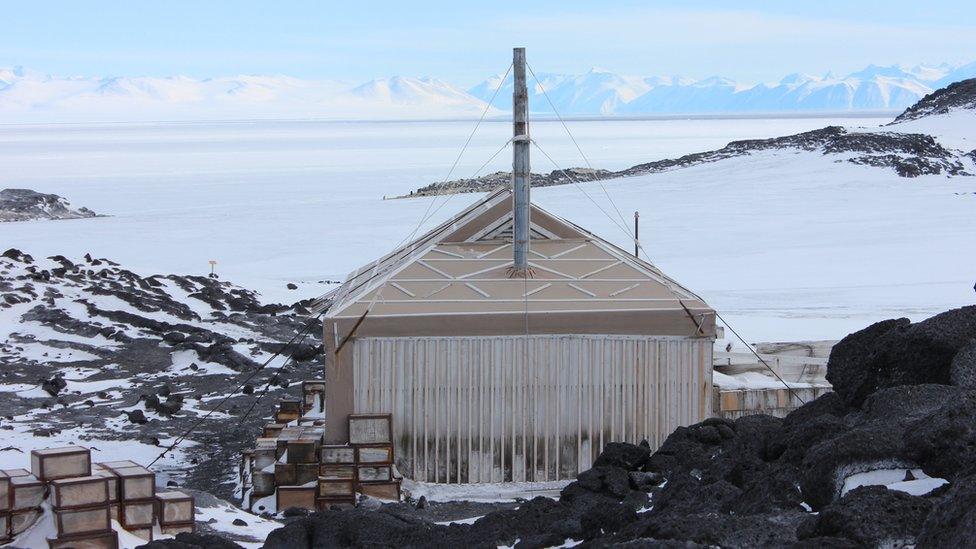
1907-1909 - Ernest Shackleton launched the British Antarctic 'Nimrod' Expedition, aiming to be the first to reach the South Pole. However, Shackleton and his team were unsuccessful.
Nimrod encountered financial problems, timing issues and inexperience. Yet, Shackleton was still proclaimed a hero and was awarded a knighthood by King Edward VII.
1923-1928 - The Mechanical Age. A time in which technological advances following World War One meant an increased number of Antarctic expeditions, many using new and existing technologies.
1944-1947 - The secret British Antarctic expedition, Operation Tabarin, was launched. It was claimed that the expedition's purpose was to patrol Antarctica for German-led threats to Allied shipping during World War Two.
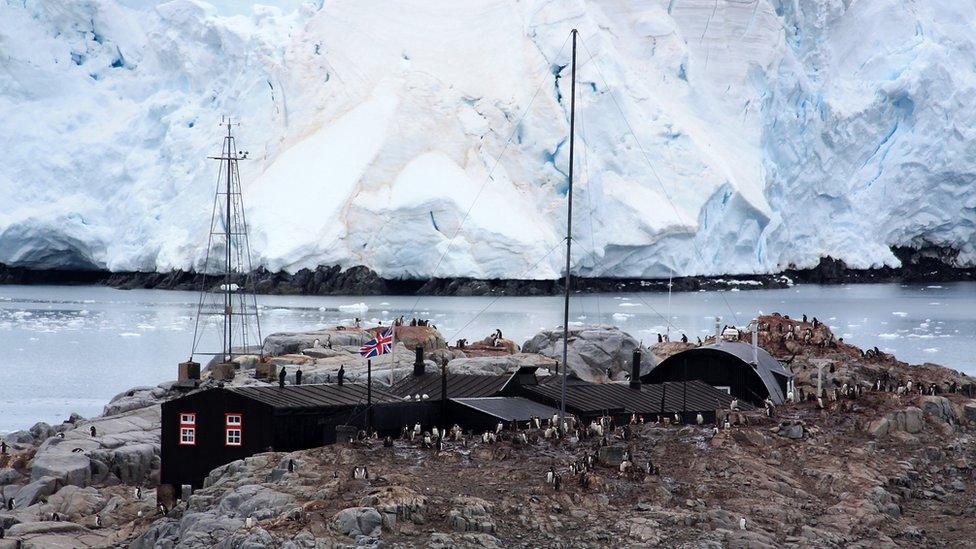
Port Lockroy
However, it also helped strengthen British presence in the continent. In those three years, a number of new bases were added, including Port Lockroy.
Home to explorers, whalers, scientists and sailors, Port Lockroy is integral to Britain's role in the Antarctic and today it is also home to a small museum, souvenir shop and the most southerly, operational post office in the world, all run by the United Kingdom Antarctic Heritage Trust (UKAHT).
What does the future hold for Antarctica?
The geography of this region has changed massively since explorers first set eyes on it, and lot of these changes have come about as a result of climate change.
Now steps have been and are being taken to try to make sure Antarctica and the creatures that live there survive.
Penguins are an essential part of the ecosystem, but the number of penguins on Antarctica is declining and that this is in part due to humans fishing the seas for the food penguins rely on.
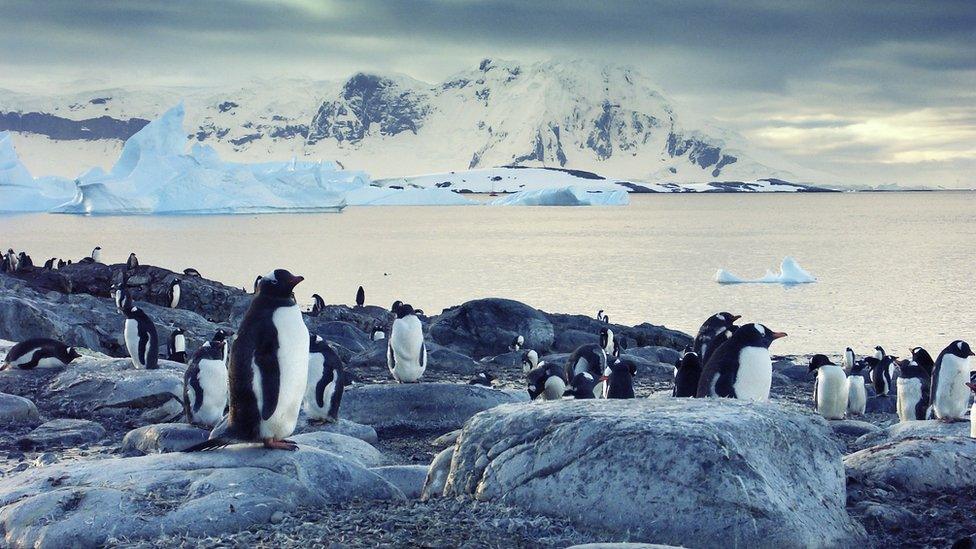
In 2016 officials from 24 countries and the European Union agreed that the Ross Sea, in Antarctica, will become the world's largest marine protected area.
This meant that 1.5 million sq km of a part of the Southern Ocean would be protected from companies wanting to fish there for the next 35 years.
But one of the biggest issues currently facing Antarctica is the amount - and speed - of ice melting.
This is of most concern when it comes to huge glaciers, like the Thwaites glacier, which are continuing to melt at an increasing speed.
Over the past 30 years, the amount of ice flowing out of Thwaites and its neighbouring glaciers has nearly doubled, and already accounts for 4% of world sea level rise - a huge figure for a single glacier.
Why is climate change a problem in Antractica?
There's enough water locked up in it to raise world sea levels by more than half a metre if the entire glacier were to melt.
Scientists say that almost a quarter of the West Antarctic Ice Sheet can now be considered unstable, with more ice being lost from the region than is being replenished through snowfall.
Last year scientists also reported that a huge section the Ross Ice Shelf, the largest one in the world, is melting 10 times faster than expected.
It is reducing in size due to the surrounding seas warming up.
The warmer oceans are also having an impact on wildlife in the area.
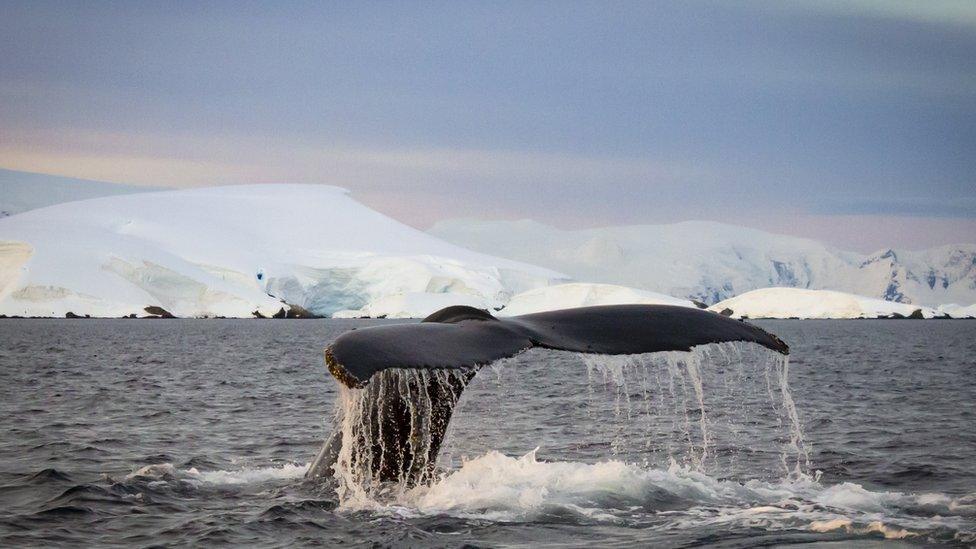
Antarctica is home to Blue Whales, Fin Whales, Humpback Whales, Killer Whales, Minke Whales, Right Whales, Sei Whales, and Sperm Whales.
Last year it was reported that Antarctic krill - the favourite food of many whales, penguins, fish and seals - is moving elsewhere, due to warming temperatures in the Southern Ocean where it lives.
Plastic waste and industrial fishing is also damaging wildlife, like whales and penguins, with microplastics and microfibres being found in Antarctic oceans.
- Published16 January 2018
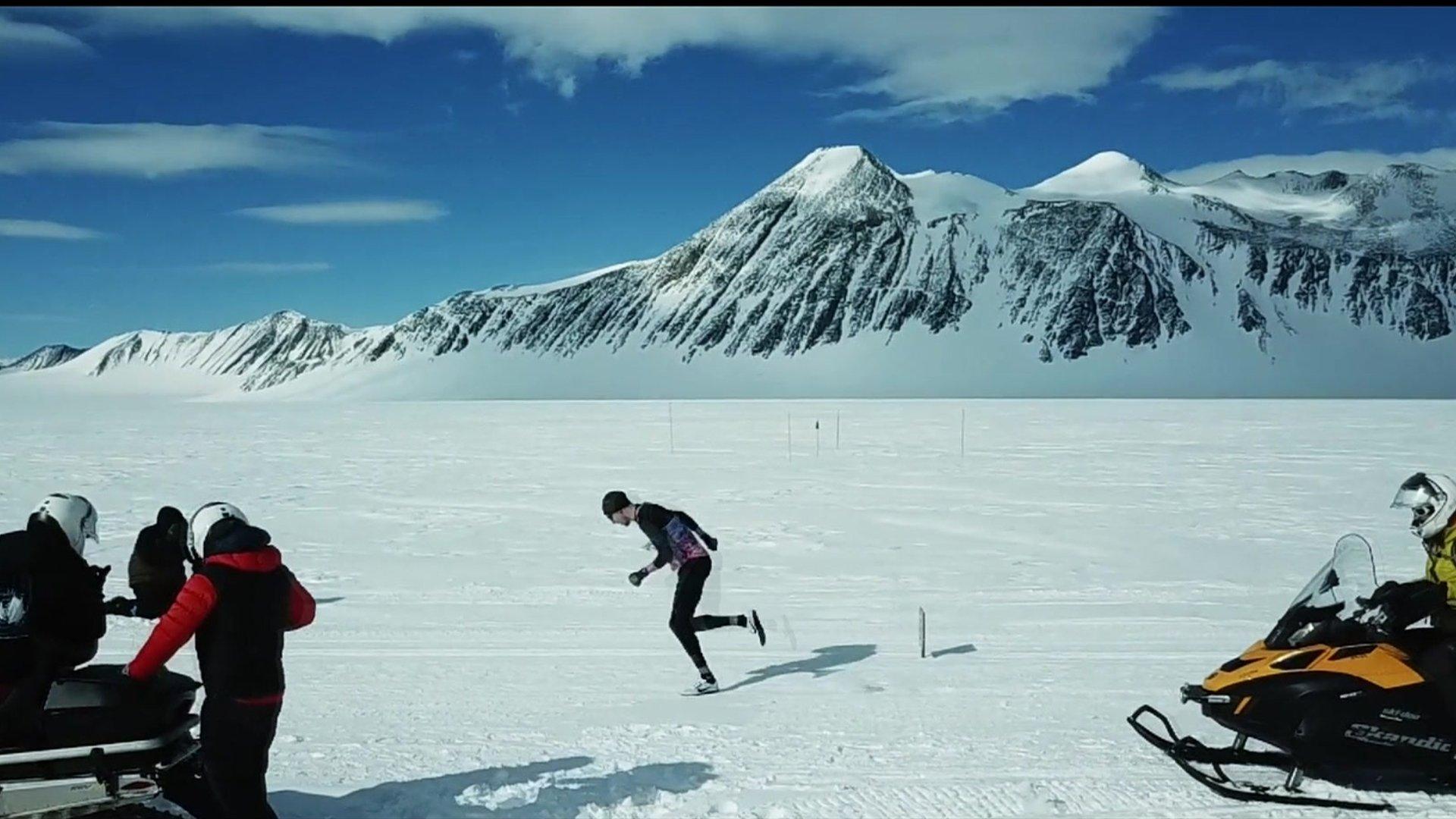
- Published17 January 2017
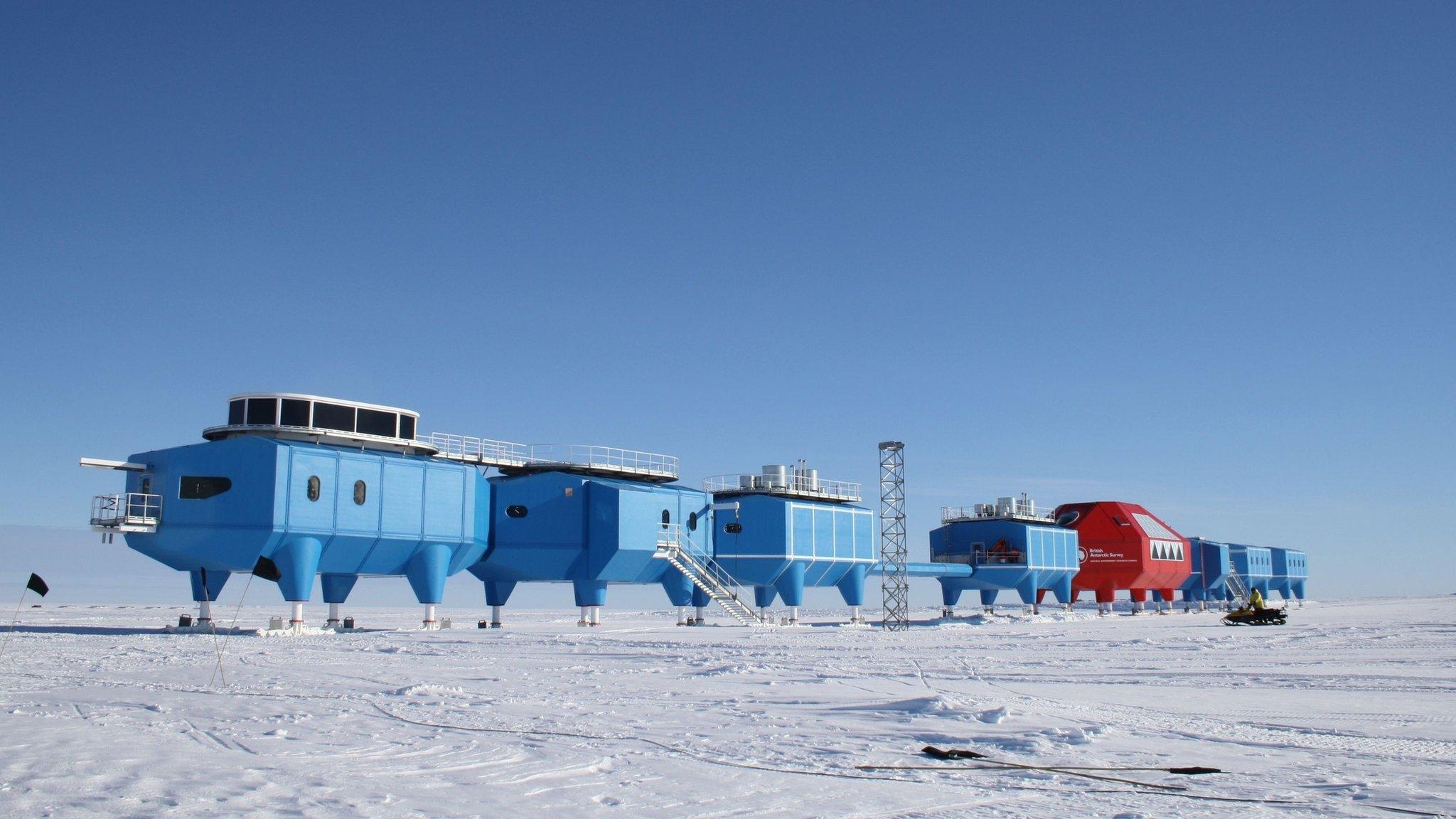
- Published6 January 2020

- Published4 November 2019
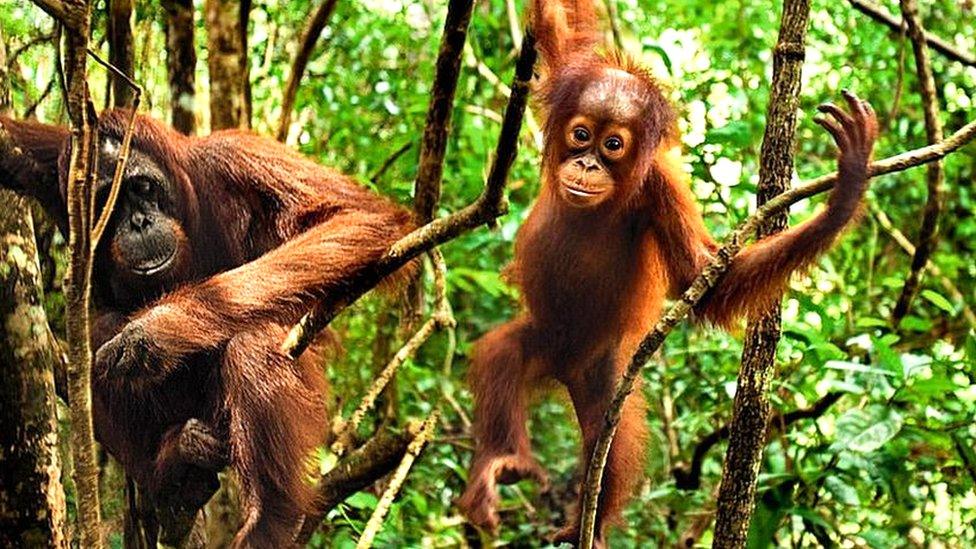
- Published29 August 2019
